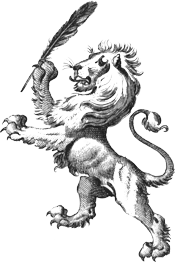Resources
From Category: Essential Tools
A Dash of Style: The Art and Mastery of Punctuation
More than just a style guide, this book discusses how creative writers can use punctuation for artistic effect. Lukeman, a literary agent and author of bestselling writing manuals, explores such questions as how dashes enhance Emily Dickinson's poems, or how Melville used semicolons to convey tension in Moby-Dick. Includes writing exercises.
A Story Is a Promise & Deep Characterization
This readable guide to plotting a work of fiction helps you identify the human need that your story promises to fulfill, and the actions that will advance that goal. Johnson, a script doctor, uses examples from action movies like Rocky and The Hunt for Red October to illustrate the different elements of a story. Whereas many writing manuals focus on the micro-elements of the scene (dialogue, setting, characterization), Johnson looks at the macro-elements, the "why" rather than the "how", in a way that will help any novelist wondering which scenes to include in her next draft.
Art and Fear
A small book full of wisdom about overcoming the psychological barriers that can prevent us from taking our own work seriously.
Bird by Bird: Some Instructions on Writing and Life
A witty look at the secret pleasures of writing, with wise advice for a writer's hardest tasks.
BookBaby
BookBaby offers self-published authors a full range of services from editing and design to printing, distribution, and marketing. BookBaby is a co-sponsor of our North Street Book Prize—that's how much we trust them!
Carolyn Howard-Johnson’s How to Do It Frugally
Carolyn Howard-Johnson's "How to Do It Frugally" website is the portal for her award-winning series of books on marketing, editing, and book proposals. Her guides for indie authors have received honors from USA Book News, the Next Generation Indie Book Awards, the Global Ebook Awards, and others. The Frugal Book Promoter and How to Get Great Book Reviews Frugally and Ethically feature strategies for free or low-cost book publicity. The Frugal Editor and Great Little Last-Minute Editing Tips for Writers will ensure that your self-published book or manuscript submission looks professional. The Great First Impression Book Proposal: Everything You Need To Know To Sell Your Book in 30 Minutes or Less covers pitching your manuscript to editors and agents.
Children’s Writer’s & Illustrator’s Market 33rd Edition
"In this book, you'll find more than 500 listings for children's book markets, including publishers, literary agents, magazines, contests, and more. These listings include a point of contact, how to properly submit your work, and what categories each market accepts." Published on January 11, 2022 by Writer's Digest Books.
Envisioning Information and Visual Explanations
These magnificent, lavishly-printed works show the power and subtlety of wise use of design, color, typography, layouts, pictures and illustrations. Don't just make a book, make a treasure.
How to Make a Living as a Poet
Successful slam poet offers creative ways to support a career as a full-time writer. Also includes advice about how to give good readings, write effective press releases, and other practical skills.
Novel & Short Story Writer’s Market 40th Edition
From Writer's Digest, "the 40th edition of NSSWM features hundreds of updated listings for book publishers, literary agents, fiction publications, contests, and more." Includes interviews with bestselling authors and tips for fiction writers.
Now What? The Creative Writer’s Guide to Success After the MFA
Published by Fairfield University's MFA Program, this multi-genre writer's guide features essays from numerous published authors about their postgraduate career paths.
Online Marketing for Busy Authors
By Fauzia Burke. If you're getting lost among all the options for marketing your book, this quick and well-organized guide will give you a helpful overview of the available tools and why to use them (or not). Especially useful are the opening chapters about deciding on your goals and dreams, because you can't figure out the what till you know the why. The advice seems most on-target for writers of commercial nonfiction (business books, self-help, cookbooks), but fiction writers will also find good tips here. Use this book to plan your overall strategy, then supplement it with more detailed guides on the specific topics that are relevant to you. Burke is an online publicist who has worked with bestselling authors such as Deepak Chopra and Sue Grafton.
Poet’s Market 34th Edition
Published by Writer's Digest, this is a leading directory of journals, magazines, book publishers, chapbook publishers, websites, grants, and contests. "These listings include contact information, submission preferences, insider tips on what specific editors want, and—when offered—payment information." Helps you find publishers who are looking for your kind of work.
The 3 A.M. Epiphany: Uncommon Writing Exercises That Transform Your Fiction
Over 200 inventive exercises to help you break out of old patterns and discover new things about your characters. Kiteley uses word limits rather than time limits to provide discipline and focus. The prompts are grouped according to the technique they are designed to develop (timing, narrative voice, and so forth) and include brief discussions of why they work.
The Business of Being a Writer
By Jane Friedman. The expert publishing blogger teaches writers about the economics of their industry in this book from the University of Chicago Press. The book is intended to help writers craft a realistic plan for earning money from their work.
The Chicago Manual of Style, 16th Edition
Create work that meets today's professional standards with guidance on grammar, usage, formats, design and sourcing (including electronic and online sources).
The Crafty Poet: A Portable Workshop
Edited by Diane Lockward. This anthology, suitable for both individual and classroom use, features craft essays and exercises for poets of all skill levels. It includes model poems and prompts, writing tips, and interviews contributed by 56 well-known American poets, including 13 former and current state Poets Laureate. Volume II is also available. Lockward is the editor of Terrapin Books, an independent publisher of poetry collections and anthologies.
Word Work: Surviving and Thriving as a Writer
Make your moods work for you, judge if and when to quit your day job, get along with the others in your home and tap the power of positive and negative thinking.
Write Ways to Win Writing Contests
A witty and practical guide to finding the best contests for your work. Topics include identifying the judges' tastes, "popular" versus "literary" styles of writing, preparing a professional-looking manuscript and avoiding scam contests. Though his examples are drawn from fiction, poets will also find this guide indispensable. John Reid is the founder of the Tom Howard poetry and prose contests, now sponsored by Winning Writers.
Writer’s Digest Guide to Literary Agents
This annual directory from Writer's Digest lists over 1,000 agents who represent writers and their books.
Writer’s Market 100th Edition
From Writer's Digest, with "...thousands of publishing opportunities for writers, listings for book publishers, consumer and trade magazines, contests and awards, and literary agents—as well as new playwriting and screenwriting sections, along with contact and submission information.
"Beyond the listings, you'll find articles devoted to the business and promotion of writing. Discover 20 literary agents actively seeking writers and their writing, how to develop an author brand, and overlooked funds for writers. This 100th edition also includes the ever-popular pay-rate chart and book publisher subject index."
Your Novel Proposal: From Creation to Contract
Everything you need to know about pitching your novel to agents and editors. Includes advice on selecting an agent, plus how to write query letters, synopses and book proposals, with many helpful samples of each.








